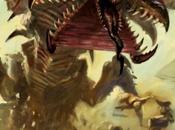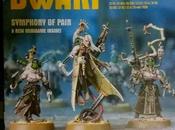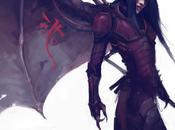
Questa è la seconda parte del tutorial per confezionare il MiniMe dolman top.
Se ve lo foste perso, qualche giorno fa abbiamo visto il tutorial per il taglio.Procediamo quindi cucendo con la tagliacuci, in 3 semplici passi:
This is the second part of the tutorial about sewing a MiniMe dolman top.
If you've lost it, a few days ago we saw the tutorial for cutting.
Let's go sewing with serger in 3 easy steps:
1. Cuciamo fianchi e spalle
Per procedere è sufficiente posizionare il davanti sul dietro, diritto contro diritto, facendo combaciare i margini dei fianchi e delle spalle, poi fissare con pochi spilli, giusto perchè la stoffa non si sposti troppo mentre si cuce.1. Sew hips and shoulders
Simply place the front on the back, right against right, matching the edges of the hips and shoulders, then secure with a few pins, so the fabric doesn't move too much while sewing.

IMPORTANTE: togliere gli spilli PRIMA di arrivare al piedino! Con la tagliacuci, infatti, si rischia di rovinare la lama se le si lasciano avvicinare troppo gli spilli!!!
IMPORTANT TIP: Remove the pins BEFORE you get to the feet!
With the serger/overlocker, in fact, you could ruin the blade if you try to serge too close to pins!
2. Chiudiamo ad anello la fascia in vita, i polsini e il bordo dello scollo
 Sovrapponiamo ora i margini di cucitura dei vari bordi (fascia in vita, polsini e scollo), per chiuderli ad anello. Anche in questo caso bastano tre spilli a tenere fermo il tutto. (a sinistra lo scollo e i due polsini, a destra la fascia in vita).
Sovrapponiamo ora i margini di cucitura dei vari bordi (fascia in vita, polsini e scollo), per chiuderli ad anello. Anche in questo caso bastano tre spilli a tenere fermo il tutto. (a sinistra lo scollo e i due polsini, a destra la fascia in vita).2. Sew in loop waist band, cuffs and the edge of the neckline
Let's overlap now the edge's seam allowances (cuffs, belt and neck), in order to close the loop. In this case we only need three pins to hold everything in place (On the left you can see the neck and the two cuffs; on the right, the waistband)

Ecco qui a destra gli stessi pezzi cuciti:
Here on the right there are the same pieces sewn with the serger:
 Ora rivoltiamo i vari pezzi, piegandoli a metà : iniziano ad avere l'aspetto finito, no?
Ora rivoltiamo i vari pezzi, piegandoli a metà : iniziano ad avere l'aspetto finito, no?Now we can turn inside out the pieces, folding them in half: are they starting to have have a finished look, aren't they
3. Applichiamo la fascia in vita, i polsi e lo scollo.
Eccoci alla parte più divertente (e forse un po' più complessa, ma neanche poi tanto!): la rifinitura dei bordi.3. Let's sew-on the waistband, cuffs and neck.
Here the fun part (and perhaps a bit more complex, but not that much!):b Per prima cosa: la fascia in vita: essendo più grande, ci consente di impratichirci meglio nella tecnica, prima di passare a polsi e scollo... Notiamo come le dimensioni della fascia (y-y1) siano minori di quelle del fondo del top (x-x1): infatti servirà a chiudere il bordo inferiore facendo cadere la maglia morbidamente.
Per prima cosa: la fascia in vita: essendo più grande, ci consente di impratichirci meglio nella tecnica, prima di passare a polsi e scollo... Notiamo come le dimensioni della fascia (y-y1) siano minori di quelle del fondo del top (x-x1): infatti servirà a chiudere il bordo inferiore facendo cadere la maglia morbidamente.Let's start with the waist band: being bigger allows us to learn the how-to, before moving on to the cuffs and neck ...
Note how the size of the band (y-y1) is smaller than the "bottom of the top" (x-x1): in fact it's because so it let the top flow smoothly.
Per cucire le due parti insieme bisogna:
 a) segnare (con degli spilli) i quarti della circonferenza (se ci sono le cuciture, es. fianchi o spalle, questo passaggio si può saltare) di entrambe le parti da unire;
a) segnare (con degli spilli) i quarti della circonferenza (se ci sono le cuciture, es. fianchi o spalle, questo passaggio si può saltare) di entrambe le parti da unire;To sew the two parts together do the following 3 simple steps:
a) mark (with pins) quarters of the circumference (if there are any seams, eg. hips or shoulders, you can skip this step) of the two parts to be joined;

b) unire le due parti con gli spilli nei punti corrispondenti ;
b) join the two parts with pins in the corresponding points;
c) cucire con la tagliacuci, tirando leggermente la stoffa tra uno spillo e l'altro, avendo cura di tenere la stoffa con una mano dietro e con l'altra davanti al piedino, fermandosi in prossimità di ogni spillo/quarto per sistemare e mettere in tensione il quarto successivo.
c) Sew together with your serger, slightly pulling the two fabrics between a pin and the other, taking care to keep the fabric with one hand behind and with the other front of the foot, stopping near each pin/quarter and preparing us for the next quarter.
If you want to take a pic of this step, you need a LilPotato photographer (not as bad as the best of my photos ... :))
 Ora procediamo allo stesso modo con i polsi, dove serve un solo spillo nel polsino: essendo circonferenze piccole basta segnare le metà e tre su quattro coincidono con le cuciture, da fare combaciare per la confezione.
Ora procediamo allo stesso modo con i polsi, dove serve un solo spillo nel polsino: essendo circonferenze piccole basta segnare le metà e tre su quattro coincidono con le cuciture, da fare combaciare per la confezione.Now let's do the same with the cuffs, where you only need one pin in the cuff: being small, you can mark only the half-circumference and three out of four coincide with the seams, which you have to match together before serging.

Notare il particolare della perfetta unione delle cuciture... professional :)
Please note the detail of the perfect union of the seams ... professional :)

Da ultimo: lo scollo.
Tre spilli sul bordo e due sullo scollo:
Last step: the neckline.Three pins on the cuff and two on the neckline:

uniamo i quarti e cuciamo...
join the quarters with pins and serge ...
Il risultato finale è una bella maglia morbida, da mettere anche solo con le calzamaglie o i leggings... Eccola, indossata dalLaPatata:
The result is a nice and slouchy dolman top, that can be worn with tights or leggings ... Here it is, LilPotato modelling:


Spero sia tutto chiaro, se avete dubbi... chiedete! Sarò felice di rispondervi :)
I hope everything is clear, if you have any question... please ask! I'll be glad to help you :)c
Con questo post partecipo a questi linky party!With this post I participate in those linky parties!






